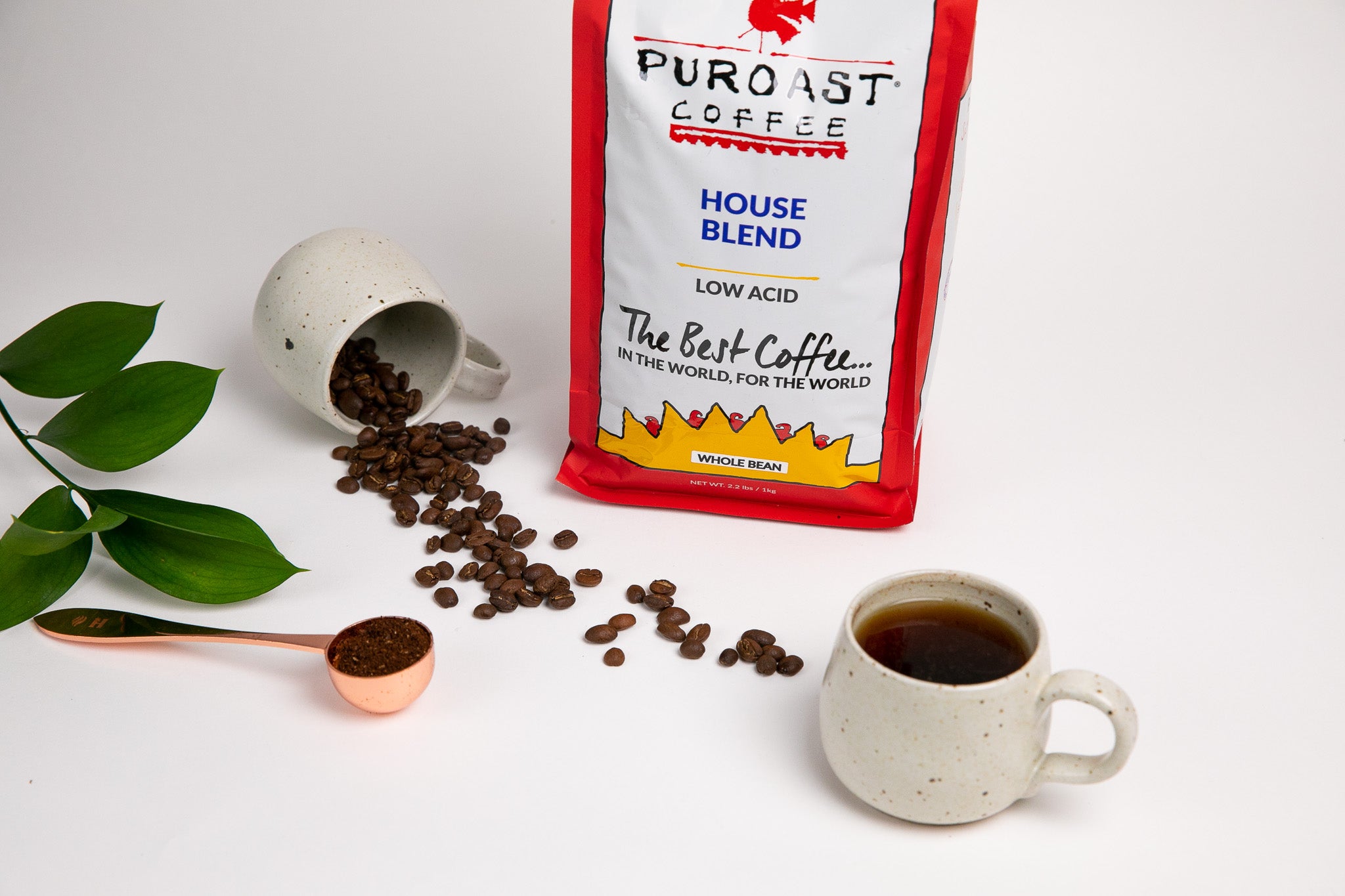The Impact of Roasting on Low-Acid Coffee Flavor Profiles

Coffee roasting is an art that transforms green, unroasted beans into the rich, aromatic coffee we all enjoy. It’s a crucial step in the coffee-making process that brings out a variety of flavors, aromas, and textures. Roasting also has a direct impact on the acidity of coffee. If youprefer low-acid coffee due to digestive issues or just personal taste, the roasting process plays a significant role in molding the flavor and acidity of the final brew.
What Is Coffee Roasting?
Coffee roasting is the heat process applied to green coffee cherry seeds that make them go through a series of complex chemical and physical reactions. This process helps develop the flavors, aromas, and textures we associate with coffee. Roasting breaks down the bean’s natural sugars, releases aromatic compounds, and brings out flavors ranging from fruity and floral to nutty, spicy, caramelly, and chocolaty.
Roasting coffee beans is much more than simply applying heat. Professional roasters pay close attention to temperature, time, and airflow to craft the perfect roast. If the beans are over-roasted for a few seconds too long or under-roasted for a few seconds too short, it can dramatically alter the taste and acidity of the coffee.
Why Is Roasting Important?
Roasting is essential because it’s the step where the coffee's flavors are developed. While the origin of the beans, such as the region where they are grown and how they are processed,certainly influences flavor, the roasting process is what unlocks the full potential of the bean.
During roasting, coffee beans undergo two main phases:
By controlling these phases, roasters can adjust the roast level, which significantly impacts the acidity and overall taste of the coffee.
How Roasting Changes Acidity Levels in Coffee?
Acidity in coffee refers to the bright, tangy notes that give the brew a sharp, lively quality. While some coffee drinkers love this zingy character, others, especially those prone to acid reflux or sensitive stomachs, prefer a smoother, low-acid option.
The roasting process can directly influence the acidity of coffee. As a general rule:
The longer the coffee beans are roasted, the more the natural acids are broken down, leading to a coffee that is easier on the stomach. For those who are sensitive to acidity, darker roasts are a much more comfortable choice.
How Roasting Affects Low-Acid Coffee Flavor Profiles?
Low-acid coffee is designed to reduce the sharp, tangy acidity that can irritate sensitive stomachs or contribute to acid reflux. However, reducing acidity doesn't mean sacrificing flavor. The roast profile of low-acid coffee is carefully crafted to maintain a rich, full-bodied flavor without the discomfort from regular brews.
Here’s how different roasting methods affect the flavor profiles of low-acid coffee:
Roasting is a key factor in shaping the flavor profiles and acidity of coffee. For low-acid coffee, dark roasting is typically preferred, as it significantly reduces acidity while enhancing deeper, smoother flavors. Whether you are sensitive to acidity due to health concerns like acid reflux or simply prefer a less tangy coffee, low-acid coffee offers a rich and enjoyable experience without the harshness of brews.
1 comment




Hi,ihave a problem with drinking coffee due to being glutenand lacto intollerant the lacto problemis solved by using coconut milk but the gluten is the problem,have you tried your process with the high roasting coffee with my problem ,please say yes and it is OKbecause i miss my coffee very much ,regards douglas williams